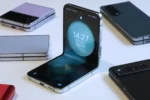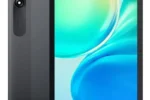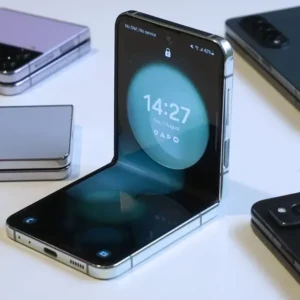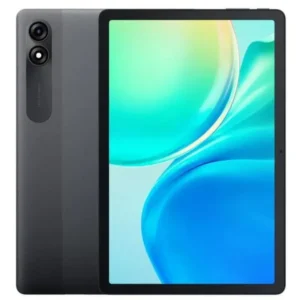IP ratings, or Ingress Protection ratings, are crucial indicators of a device’s water and dust resistance, helping consumers determine the durability of their gadgets. These ratings are especially relevant in today’s world, where waterproof smartphones are becoming increasingly common, with many boasting impressive ratings like IP68. Understanding these ratings can guide users in choosing devices that can withstand harsh environments, from high-temperature water jets to dusty conditions. Moreover, devices rated IP68 are not only dust-tight but can also endure submersion in water, making them ideal for adventurous users. As technology advances, knowing how to interpret IP ratings becomes essential for making informed purchasing decisions.
When discussing the resilience of electronic devices, terms like ingress protection ratings or environmental sealing often come into play. Such ratings clarify how well a gadget can resist elements like moisture and dust, which is particularly important for outdoor enthusiasts. For instance, devices with a designation of IP68 are designed to withstand significant exposure to water and harmful particles, ensuring longevity in challenging conditions. Additionally, standards like MIL-STD-810 further emphasize the ruggedness expected from modern equipment, indicating their ability to endure extreme environments. Understanding these protective measures is vital for anyone looking to invest in reliable technology.
Understanding IP Ratings: What Do They Mean?
IP ratings, or Ingress Protection ratings, are essential for consumers looking to understand the durability of their devices, particularly smartphones. These ratings are expressed in the format IPXX, where the first digit indicates protection against dust, and the second digit signifies protection against liquids. For instance, a device rated IP68 is considered dust-tight and can withstand submersion in water up to 1.5 meters for a specific period, typically 30 minutes. This level of protection is often sought after by users who frequently expose their devices to challenging environments.
The significance of these ratings goes beyond mere specifications; they provide a standardized measure of durability that consumers can rely on when purchasing electronics. They eliminate the ambiguity often associated with marketing terms like “water-resistant” or “waterproof.” For example, a smartphone with an IP68 rating offers much more assurance compared to one that simply claims to be water-resistant. Understanding these ratings helps consumers make informed decisions and select devices that can withstand outdoor adventures or daily wear and tear.
The Importance of Dust Resistance in Smartphones
Dust resistance is a critical factor for many smartphone users, especially those who work in construction, outdoor environments, or travel frequently. Devices rated with a dust protection level of 6, such as those with an IP68 rating, are completely dust-tight, meaning no dust particles can enter the device. This level of protection ensures that the internal components remain safe from debris, which can cause malfunctions or reduce the lifespan of the device. For users, this translates to fewer worries about their device when exposed to dusty conditions.
Moreover, dust resistance contributes to the overall durability of the device. Smartphones that can withstand dust are often built to higher standards, which means they are generally more robust against other environmental factors. This protection is particularly beneficial in sandy or dusty environments where other devices might fail. Users who invest in dust-resistant smartphones find that they can maintain their device’s performance over time, thus enhancing the value of their purchase.
Comparing IP Ratings: IP68 vs. IP69K
When selecting a smartphone or other electronic devices, understanding the differences between IP68 and IP69K ratings is crucial. While both ratings indicate superior protection against dust and water, IP69K offers enhanced features that cater to more extreme conditions. Devices rated IP69K are not only dust-tight but can also withstand high-pressure water jets at high temperatures. This makes them ideal for industries where equipment is regularly exposed to harsh cleaning processes or environments.
On the other hand, IP68 devices are typically designed for everyday use and can handle submersion in water to a certain depth. For example, the iPhone 16 has an IP68 rating, allowing it to be submerged for up to 30 minutes at a depth of 6 meters. However, for those working in rigorous environments where exposure to high-pressure jets is common, opting for an IP69K device like the Ulefone Armor series may be the better choice. Understanding these ratings ensures that users choose a device that meets their specific needs.
Real-World Applications of IP Ratings
The real-world applications of IP ratings extend beyond just specifications; they significantly impact how consumers use their devices. For instance, outdoor enthusiasts or workers in rugged environments rely on the assurance provided by high IP ratings. An IP68-rated smartphone can accompany them on hiking trips, ensuring that if it rains or they encounter water crossings, their device remains functional. Similarly, individuals who frequently handle their phones in dusty areas, such as construction sites, will benefit from a dust-tight rating.
Moreover, understanding IP ratings can help users avoid unnecessary damage. Many people mistakenly assume that all smartphones are equally resistant to water or dust. However, devices without a proper IP rating may suffer severe damage in similar conditions. By choosing devices with verified IP ratings, users can significantly reduce the risk of costly repairs and enjoy their smartphones in various environments.
The Role of MIL-STD-810 Ratings in Rugged Devices
In addition to IP ratings, the MIL-STD-810 standard is another important benchmark for evaluating the durability of electronic devices. Developed by the United States Military, this standard tests equipment for resilience against various environmental conditions, including extreme temperatures, humidity, vibration, and impacts. Devices that carry a MIL-STD-810 rating, such as certain rugged smartphones, are designed to withstand harsher conditions than regular consumer devices.
For users who frequently work in demanding environments, such as military personnel or outdoor workers, the combination of IP and MIL-STD-810 ratings provides a robust assurance of durability. These devices are built not just to resist dust and water but also to endure physical shocks and extreme temperature fluctuations. By investing in such rugged devices, users can ensure that their technology remains reliable regardless of the challenges they face.
Can You Trust IP Ratings?
Trusting IP ratings can be a complex issue for consumers. While many reputable manufacturers conduct rigorous testing to ensure their devices meet claimed IP standards, not all companies maintain the same level of integrity. Some lesser-known brands may exaggerate their products’ capabilities, leading to dissatisfaction when users discover their devices do not perform as advertised. Therefore, it’s essential for consumers to research and choose brands with a proven track record of accuracy in their IP rating claims.
Furthermore, it’s crucial to consider that even a device with a high IP rating can succumb to wear and tear over time. Factors such as regular exposure to harsh elements can degrade seals and gaskets, diminishing the device’s protection. Users should remain vigilant and take care to maintain their devices, ensuring that they remain water and dust-resistant throughout their lifespan. Understanding the nuances of IP ratings empowers consumers to make informed choices and protect their investments.
The Best Waterproof Smartphones on the Market
When searching for the best waterproof smartphones, options like the Samsung Galaxy S25 and the iPhone 16 frequently top the lists. Both devices boast an IP68 rating, making them excellent choices for users who need reliable protection against water and dust. The Galaxy S25, while rated for submersion in freshwater up to 1.5 meters for 30 minutes, offers a blend of high performance and durability, catering to both everyday users and outdoor adventurers alike.
Similarly, the iPhone 16 excels in its water resistance, allowing for submersion in deeper waters. Users looking for a smartphone that can handle both accidental spills and more serious exposure to water will find the IP68 rating reassuring. Additionally, these smartphones are equipped with advanced technology, ensuring that while they are rugged enough for outdoor use, they also provide exceptional performance in everyday tasks.
Choosing the Right IP Rating for Your Needs
Selecting the right IP rating for your device largely depends on your lifestyle and usage scenarios. For casual users who primarily use their smartphones indoors, a lower IP rating may suffice. However, for those who lead active lifestyles or work in challenging environments, investing in a device with a higher IP rating, such as IP68 or IP69K, is advisable. Understanding your own needs will guide you in making a more informed decision and selecting a device that can withstand your daily life.
Moreover, it’s worthwhile to consider additional features that come with devices boasting higher IP ratings. Many smartphones that offer robust water and dust resistance also include advanced features like enhanced battery life, superior camera quality, and improved overall performance. Thus, when choosing a device, look beyond just the IP rating and consider how it fits into your broader tech ecosystem.
The Future of Waterproof Technology in Smartphones
As technology continues to evolve, the future of waterproof technology in smartphones is promising. With advancements in materials and engineering, we can expect to see even higher IP ratings becoming the norm in the next generation of devices. Manufacturers are increasingly focused on creating smartphones that can withstand extreme conditions without compromising performance, thus expanding the possibilities for users who rely on their devices in diverse environments.
Additionally, as consumer awareness of IP ratings grows, there is a push for manufacturers to be more transparent about their testing methods and results. This trend will likely lead to a more standardized approach to IP ratings across the industry, ensuring that consumers can trust the claims made by manufacturers. Ultimately, the future of waterproof technology is set to enhance user experience, offering devices that are not just durable but also equipped with cutting-edge features that cater to the modern user’s needs.
Frequently Asked Questions
What does an IP68 rating mean for a waterproof smartphone?
An IP68 rating indicates that a waterproof smartphone is dust-tight and can withstand immersion in water beyond 1 meter for extended periods, typically up to 30 minutes. This makes it ideal for outdoor enthusiasts who need reliable devices in wet conditions.
How can I tell if my smartphone is dust-resistant?
To determine if your smartphone is dust-resistant, check its IP rating. Ratings with a ‘6’ in the first digit, such as IP68, indicate complete dust-tight protection, ensuring that no dust can enter the device, which is crucial for maintaining functionality in harsh environments.
Are MIL-STD-810 rated devices better than those with standard IP ratings?
MIL-STD-810 rated devices are subjected to military-grade tests for durability, including extreme temperatures and impacts, which may exceed typical IP ratings. While an IP68 smartphone may handle water and dust well, a MIL-STD-810 rating suggests higher resilience to environmental challenges.
What is the difference between water-resistant and waterproof in terms of IP ratings?
Water-resistant implies some level of protection against water, typically classified with IP ratings such as IPX4 or IP65. In contrast, waterproof means the device can be submerged in water without damage, commonly represented by IP67 or IP68 ratings.
Can an IP68-rated smartphone survive high-temperature water jets?
While an IP68 rating ensures protection against immersion in water, it does not guarantee resistance to high-pressure, high-temperature water jets, which are covered by IP69 ratings. For extreme conditions, look for devices specifically rated IP69.
What does IPX5 rating imply for a smartphone’s water resistance?
An IPX5 rating means that the smartphone can withstand water sprays from any direction but is not tested for dust entry. This rating is suitable for light exposure to water but not for submersion.
How does wear and tear affect the IP ratings of devices over time?
Over time, wear and tear can compromise the seals and gaskets that protect against dust and water, diminishing the effectiveness of an IP rating. Regular exposure to elements like water and dust can lead to reduced resistance, even for initially IP68-rated devices.
Are there any smartphones that meet both IP68 and MIL-STD-810 standards?
Yes, some rugged smartphones, such as the Ulefone Armor series, claim both IP68 and MIL-STD-810 ratings, indicating they are built to withstand both water and dust as well as meet military-grade durability standards.
What should I consider when buying a waterproof smartphone with an IP rating?
When purchasing a waterproof smartphone, consider the IP rating, the manufacturer’s reputation for testing accuracy, and the device’s intended use. Ensure the rating meets your needs for water exposure, whether for immersion or splashes.
How do IP ratings help understand a device’s durability?
IP ratings provide a standardized measure of a device’s resistance to dust and water, helping consumers understand its durability in real-world scenarios. They eliminate ambiguity, allowing users to choose devices that fit their lifestyle and environmental challenges.
| IP Rating | Dust Protection (First Digit) | Liquid Protection (Second Digit) |
|---|---|---|
| X | Unknown | Unknown |
| 0 | No protection against dust or solid objects | No protection against liquids |
| 1 | Protection against solid objects larger than 50 mm (e.g., hands) | Protection against vertically falling water drops |
| 2 | Protection against solid objects larger than 12.5 mm (e.g., fingers) | Protection against vertically falling water drops when the device is tilted up to 15° |
| 3 | Protection against solid objects larger than 2.5 mm (e.g., tools, wires) | Protection against water sprays at an angle of up to 60° |
| 4 | Protection against solid objects larger than 1 mm (e.g., small wires) | Protection against water splashes from any direction |
| 5 | Limited protection against dust (dust might enter but won’t interfere with operation) | Protection against low-pressure water jets from any direction |
| 6 | Complete protection against dust (dust-tight) | Protection against high-pressure water jets from any direction |
| 7 | N/A | Protection against temporary immersion in water (up to 1 meter for 30 minutes) |
| 8 | N/A | Protection against continuous immersion in water under conditions specified by the manufacturer (e.g., depth and time) |
| 9 | N/A | Protection against high-pressure, high-temperature water jets |
Summary
IP ratings are crucial for understanding the water and dust resistance of devices. They provide a standardized way to measure how well a device can withstand environmental factors, ensuring consumers can make informed decisions. Knowing your device’s IP rating can help you choose the right equipment for your lifestyle, especially if you often find yourself in challenging conditions. Remember, while IP ratings offer valuable insights, the integrity of the rating depends on the manufacturer’s honesty and the device’s condition over time.










